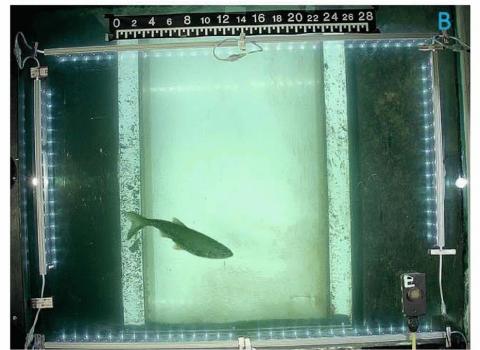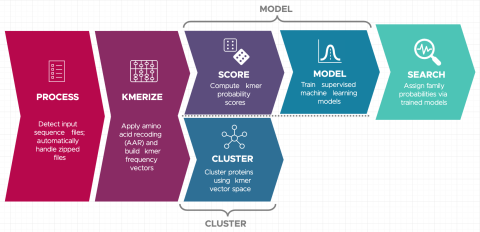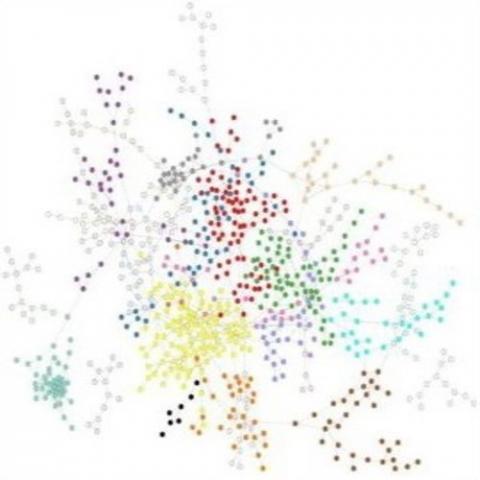Filter results
Category
- (-) Scientific Discovery (49)
- (-) Energy Efficiency (1)
- Biology (37)
- Earth System Science (22)
- Human Health (21)
- Integrative Omics (16)
- Computational Research (11)
- Microbiome Science (9)
- National Security (6)
- Computing & Analytics (5)
- Data Analytics & Machine Learning (5)
- Energy Resiliency (3)
- Chemistry (2)
- Computational Mathematics & Statistics (2)
- Materials Science (2)
- Renewable Energy (2)
- Chemical & Biological Signatures Science (1)
- Coastal Science (1)
- Data Analytics & Machine Learning (1)
- Ecosystem Science (1)
- Energy Storage (1)
- Solar Energy (1)
- Weapons of Mass Effect (1)
Software Type
Tags
- Omics (17)
- Genomics (6)
- High Throughput Sequencing (6)
- Mass spectrometry data (6)
- Omics-LHV Project (6)
- Virology (6)
- Differential Expression Analysis (5)
- Gene expression profile data (5)
- Imaging (5)
- Immune Response (5)
- Mass Spectrometer (5)
- Mass Spectrometry (5)
- Multi-Omics (5)
- Sequencer System (5)
- Time Sampled Measurement Datasets (5)
- Autoimmunity (4)
- Biomarkers (4)
- Homo sapiens (4)
- Molecular Profiling (4)
- Proteomics (4)
- Type 1 Diabetes (4)
- Machine Learning (3)
- Mass spectrometry-based Omics (3)
- Microscopy (3)
- Mus musculus (3)
- Biological and Environmental Research (2)
- Ebola (2)
- Lipidomics (2)
- metabolomics (2)
- Spectroscopy (2)
The Sequel II System Sequencer is a high-throughput DNA sequencer machine developed and manufactured by PacBio , and is designed for high throughput, production-scale sequencing laboratories. Originally released in 2015, the Sequel system provides Single Molecule, Real-Time (SMRT) sequencing core...
The Human Islet Research Network (HIRN) is a large consortia with many research projects focused on understanding how beta cells are lost in type 1 diabetics (T1D) with a goal of finding how to protect against or replace the loss of functional beta cells. The consortia has multiple branches of...
Datasets
0
LIQUID Software Overview LIQUID provides users with the capability to process high throughput data and contains a customizable target library and scoring model per project needs. The graphical user interface provides visualization of multiple lines of spectral evidence for each lipid identification...
Category
pmartR Software Overview The pmartR package provides a single software tool for QC (filtering and normalization), exploratory data analysis (EDA), and statistical analysis (robust to missing data) and includes numerous visualization capabilities of mass spectrometry (MS) omics data (proteomic...
Last updated on 2023-02-23T19:37:46+00:00 by LN Anderson Snekmer: A scalable pipeline for protein sequence fingerprinting using amino acid recoding (AAR) Snekmer is a software package designed to reduce the representation of protein sequences by combining amino acid reduction (AAR) with the kmer...
The influence of tidal inundation dynamics on below ground carbon pools is poorly understood across coastal terrestrial-aquatic interface (TAI) ecosystems. The dynamic environmental conditions of tidally-influenced landscapes, the chemically complex nature of carbon compounds, the diverse nature of...
Category
Datasets
3
The Phenotypic Response of the Soil Microbiome to Environmental Perturbations Project (Soil Microbiome SFA) at Pacific Northwest National Laboratory is a Genomic Sciences Program Science Focus Area (SFA) Project operating under the Environmental Microbiome Science Research Area. The Soil Microbiome...
Datasets
23
Category
Datasets
1
Category
Datasets
8
This project is an interdisciplinary collaboration supported by US DOE Office of Science's Scientific Discovery through Advanced Computing (SciDAC) program. The project addresses a crucial but largely overlooked source of error in the Energy Exascale Earth System Model (E3SM) and other atmosphere...
Category
Datasets
2
The PNNL-SERDP database was constructed by PNNL to generate the quantitative infrared spectra of gases associated with biomass burning; the reference data are to allow detection and quantification of such gases via infrared absorption spectroscopy. Candidates for the database were selected based on...
Category
Datasets
2
Category
Datasets
1
Category
Datasets
1
Category
Datasets
1











